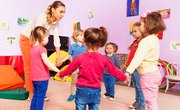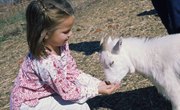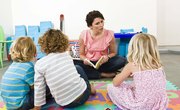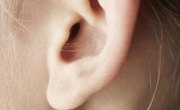Young children enjoy learning about nests because nests represent baby animals -- and children love baby animals. It's important for preschoolers to learn about nests, however, because animals rely on nests to keep their offspring safe, and so nests -- in turn -- must also be kept safe. Plan a lesson on that introduces your students to nests, and then expands their ideas of what nests can be.
Learning the Word
Introduce the the theme of nests with either a photograph or a video clip. Then hold up a sign that says "nest." Ask your class which letter of the alphabet the word "nest" begins with, and have them all repeat the sentence "Nest begins with the letter N." Then, have them repeat each of the other letters in "nest" and have them call out the letters in order to spell the word. After you've finished with teaching the word, lead into your next lesson by asking students to say what builds a nest, or what they might find in one.
Exploring Nesting Animals
Gather photographs of animals that build nests, as well as photographs of the nests those animals build. Furthermore, make sure that many of these animals aren't birds. Hold a photograph up and ask if this type of animal builds a nest. After your class answers, say that they do and then hold up the picture of the appropriate nest. Explain that there are many types of nests in addition to birds' nests. For example, you can show them a photograph of a squirrel, and then one of a squirrel's nests with baby squirrels. You can also explain that some animals build nests in very specific ways that have specific names, such as a muskrat lodge.
Observing in the Field
Ask your class how they would best like to study nests. Chances are somebody will say they'd like to see a real one. If possible, take your class outside to see an actual nest. If you find one, allow the class to look at it, but warn them not to touch it or get too close because it's very important they don't disturb the animals living in it. If you don't have a nearby nest to visit, bring one in to the classroom. You can either bring in an old, actual nest, or a reconstruction of one that you can make at home. Allow the class to examine the nest and discuss if it looks neat, or dirty, and talk about how nests are built.
Building Nests
To top off your lesson, allow students -- individually or in small groups -- to build their own nests. Bring in yarn, twigs, string and feathers for your students to use. Before they begin, demonstrate how a bird weaves material together to make a nest sturdy. Allow your students to experiment with different ways of building nests, and when they realize how difficult it is, you can remark on how talented a bird must be to do it so well. Also, if you have students who would rather build burrows instead of nests, you can bring in containers of top soil for them. After they're all finished, display your nests around the classroom.
Related Articles
References
Writer Bio
Christopher Cascio is a memoirist and holds a Master of Fine Arts in creative writing and literature from Southampton Arts at Stony Brook Southampton, and a Bachelor of Arts in English with an emphasis in the rhetoric of fiction from Pennsylvania State University. His literary work has appeared in "The Southampton Review," "Feathertale," "Kalliope" and "The Rose and Thorn Journal."











